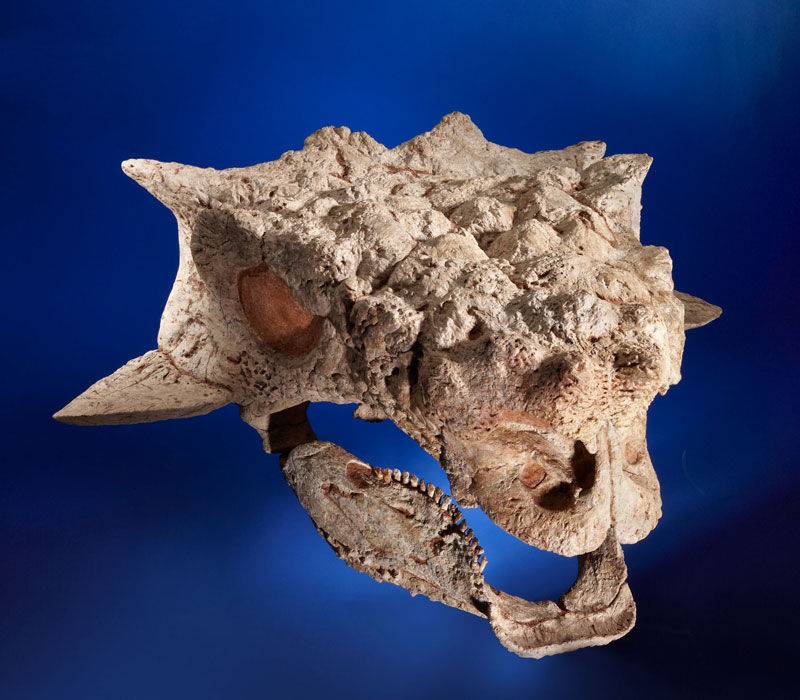Beyond the Tyrannosaur: Other Auction Specimens Alarm Scientists

While the nearly complete tyrannosaur skeleton up for auction on Sunday (May 20) is now the subject of a legal battle, other fossils sold that day may also have been smuggled out of Mongolia, paleontologists say.
These include teeth belonging to the same species of dinosaur, a Tarbosaurus bataar, and the distinctive skull of an ankylosaurid, an armored dinosaur. [Up For Auction: A Natural History Gallery]
With the exception of some fragments that are difficult to definitively identify, fossils belonging to Tarbosaurus bataar (also called Tyrannosaurs bataar) have come exclusively from a single rock formation in Mongolia, a country that forbids the export of fossils.
Looting of fossils is an increasing problem in Mongolia, paleontologists say.
"The thing that bothers me the most is when they only go for the high-quality parts they can make the most money on," Philip Currie, a paleontologist from the University of Alberta who works in Mongolia, said of looters. "They will deliberately destroy skeletons, take just the skull or just the teeth from the skull and the claws and leave the rest … just the shattered bones on the ground."
Currie believes the teeth, which the auction house Heritage Auctions identifies as coming from a Tyrannosaurus bataar, are the result of such looting. He bases this on the presence of a long root on the teeth. These dinosaurs replaced their teeth every year or two when the root of the old tooth dissolved away, so a tooth that had been lost naturally would have no root on it. The presence of a root indicates the tooth was hacked out of the jaw by looters, he said.
In its auction catalogue, Heritage Auctions offers a different explanation: "The only way a fully-rooted tooth could be preserved is when a complete skull was decomposing, and teeth loosened and fell-out, as scavengers, insects and bacteria did their work on the rotting flesh."
Sign up for the Live Science daily newsletter now
Get the world’s most fascinating discoveries delivered straight to your inbox.
The auction catalogue also identifies the Nemegt Formation, a rock formation only exposed in Mongolia, as the origin of the teeth.
The ankylosaurid, a species called Saichania chulsanensis, has been found only in this formation as well, although, "that's not to say it won't be found elsewhere," Currie said. At Sunday's auction, the skull sold for $62,500.
Mongolian President Elbegdorj Tsakhia attempted to stop the sale of the nearly complete T. bataar skeleton, and the sale is now in legal limbo. The temporary restraining order filed in Tsakhia's name in a Texas court only addresses the skeleton, and none of the other specimens.
Heritage Auctions does not identify consignors seeking to sell items. On Sunday, Heritage president Gregory Rohan pointed out that putting a specimen with questionable ownership in a major auction would make no sense.
"If there is a title problem, you go and sell it secretly to someone in a backroom for a suitcase full of cash. That is something we have nothing to do with," he said.
Heritage Auctions declined to answer specific questions on Tuesday (May 22), releasing this statement: "Because of the complexity of the circumstances, our auction sale of the dinosaur was conditional on a resolution of the court case. We are now focused on working with the parties involved to try to achieve a fair and amicable resolution."
You can follow LiveScience senior writer Wynne Parry on Twitter @Wynne_Parry. Follow LiveScience for the latest in science news and discoveries on Twitter @livescience and on Facebook.










